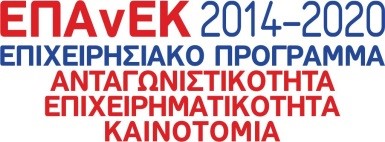Contract Management: a challenge for most businesses

The results of a major survey conducted by EY with the Harvard University
Inefficiencies in contract management processes have been a big challenge for businesses over time.
According to the recent report “How does contracting complexity hide clear profitability?” by EY Law in collaboration with the Harvard University Law School:
- 57% of respondents recorded a loss of revenue due to inefficiencies in the procurement process.
- 50% state that they have missed out on business opportunities.
The above data make it clear that contract management procedures need immediate improvement. The purpose is to reduce operating costs and increase efficiency.
What does the EY Law report reveal about contract management
Indeed, the report shows that the vast majority of companies are preparing the improvement of their procedures. Moreover, a third of businesses aim for at least a 30% reduction in the cost of signing a new contract.
Some of the challenges that businesses face in their effort of improving their contract management processes are the lack of:
- Clarity, when identifying who is in charge of decision-making, among the legal department and the contract managers.
- The necessary digital tools.
The survey findings reveal that technology adoption and strategy in contract management processes are not fully developed. In particular:
- 99% of companies declare that they do not have the necessary technological infrastructure to improve their contract management processes.
- 49% do not have a predefined process for archiving contracts after they have been concluded.
- 60% of companies do not require their staff to use templates when writing contracts.
- 62% of companies say they cannot monitor the progress of their contract management actions.
- 78%of companies say they do not monitor their contractual obligations consistently.
- 71% of contracts are not checked for deviations from their standard terms.
Having carefully studied this report, we comprehend that the increased costs and inefficiency of contract management processes result from the following factors:
Poor cooperation between departments
There is confusion between the legal department, procurement department, contract managers, sales, and administration as to the responsibilities and procedures of the contract lifecycle. As a result of this, frequent failures and delays occur. At the same time, the lack of a clear division of responsibilities undermines the company’s ability to make decisions.
Lack of standardization in contract management procedures
The majority of companies do not apply the necessary standardization in management procedures and contract terms. This lack of coherence and organization results to:
- Effective control of contracts is practically impossible.
- The risks are not sufficiently contained.
- The cost of administering contracts increases significantly.
Weak visibility and monitoring
The possibility of getting the full picture of contracts and daily issues is completely lost for the following reasons:
- Lack of centralized control system
- Processing of staff work on a case-by-case basis
- Scattered information throughout the organization
As a result, the C-Level is unable to identify problems and failures in contract management, in order to take the necessary actions in time.
Insufficient infrastructure
The significant gap in the adoption of modern contract management systems is a major obstacle to improving contract life cycle processes. In addition, to address these shortcomings you need the right digital tools.
Adoption of modern contract management systems
A modern contrace management system can give your business the right tools to:
- Manage operating costs
- Reduce risks and failures in contract management
- Significantly increase staff productivity
As a matter of fact, the Papyros ECM Platform is a centralized and easy-to-use environment for the drafting, control, approval, and monitoring of contracts, so that the company can facilitate cross-departmental collaboration. At the same time, it can apply standardization rules, design and monitor specific key performance indicators (KPIs), automating the contract lifecycle.



